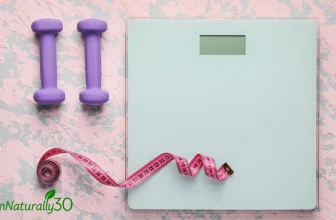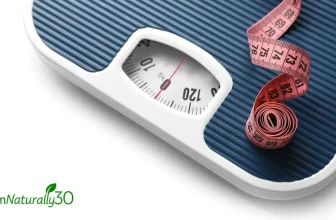
I Took Probiotics. Nothing Changed.
I used to grab whatever probiotic was on sale. 10 billion CFUs? Sounds powerful. "For digestive health"? Good enough.
But after weeks—sometimes months—I'd be staring at the same bloated belly and wondering why nothing felt different. I kept thinking maybe it was me. Maybe I wasn't consistent. Or maybe probiotics were just overhyped.
Turns out… I was just taking the wrong ones.
Not All Strains Are Created Equal

I didn't know probiotics were like ingredients. Specific strains do specific things. And unless you match the strain to the issue, it's like trying to fix a leaky faucet with duct tape—it might hold for a second, but it won't solve the real problem.
No one told me this. The bottles sure didn't. They just threw around words like "gut support" and "immune health."
But as a woman over 30—dealing with hormonal shifts, sluggish digestion, and weird mood dips—I needed more than vague promises.
I needed science. I needed something that actually worked with my body—not just looked good on a label.
These Are the Strains That Finally Made a Difference
Lactobacillus rhamnosus
I noticed less bloating after meals when I started taking a formula with this. Later I learned it helps regulate digestion and reduces stress-induced gut issues—something I didn't even realize was connected.
Lactobacillus reuteri
This one surprised me. It's been shown to help with hormone balance and skin clarity. I can't prove it, but around week 3, I stopped breaking out around my jawline during PMS. Coincidence? Maybe. But I kept taking it.
Bifidobacterium lactis
This strain is a powerhouse for immunity and inflammation. I felt fewer random colds and less joint stiffness. It didn't happen overnight—but it added up.
Lactobacillus acidophilus
I used to get recurring UTIs after antibiotics. This strain helps maintain balance in the vaginal microbiome—and I haven't had one since I started using a probiotic that included it. That alone was worth it.
Saccharomyces boulardii
It's a yeast, not a bacteria—but it helped me reset after a round of antibiotics. Especially when my digestion felt completely off-track. It's like damage control for your gut lining.
Don't Just Look at the Numbers—Look at the Strains
I used to pick probiotics by the highest CFU count. 10 billion? 25 billion? 50? It felt like more = better.
But that's like choosing shoes by how many shoelace holes they have. It makes no sense if the fit is wrong.
Now I look for formulas that list specific strains—ideally the ones that are actually studied for women's health. Not just "Lactobacillus blend" or "gut support mix."
Also, I check if the capsules are delayed-release (so they survive stomach acid), and if there are ingredients I can pronounce. Sounds simple, but it saved me so much frustration.
I Stopped Falling for Labels—and Started Listening to My Gut
For a while, I thought maybe I was just "too sensitive." Like my body was the problem for not responding to what everyone else swore by.
But now I know better. It wasn't my fault—I just didn't have the right information.
Once I understood what each strain actually did, everything clicked. I could connect the dots between what I was feeling and what I actually needed.
And that shift—from trying random bottles to choosing with intention—was what finally helped me feel in sync with my body again.
The First Probiotic That Actually Aligned with What I Needed
When I came across LeanBiome, I almost skipped it. I'd been burned before—pretty bottles, big promises, no results.
But when I read the label, I saw strains I recognized: Lactobacillus rhamnosus, Bifidobacterium lactis, Lactobacillus reuteri… And not in a "proprietary blend," but actually listed.
I figured—worst case, it's another letdown. But best case? Maybe it's the match I'd been missing.
Three weeks in, I wasn't bloated after lunch. My skin looked calmer. I didn't wake up groggy. It wasn't dramatic—it was consistent.
If you've been guessing with probiotics too, maybe this is your sign to get more specific:
Or read my full experience here: → Honest LeanBiome Review
Also: → Cleveland Clinic: What to Know About Probiotics by Strain
You Don't Need Every Probiotic—Just the Right Ones
I used to think probiotics were a numbers game. The more strains, the higher the count, the better. But that just left me frustrated and bloated… and broke.
Now, I choose simpler. Smarter. I look for what my body actually responds to—and let go of the noise.
"You don't need perfect digestion. You need a gut that feels supported—by habits that make sense to you."
If this opened your eyes a little, you might also want to read:
→ 5 Foods That Quietly Wreck Your Gut
Frequently Asked Questions
How do I know which probiotic strain I need?
Match the strain to your goal. For example: L. reuteri for skin/hormones, B. lactis for immunity, L. acidophilus for urinary balance. Look for products that list strains clearly.
Can I just take any general probiotic for women?
You can—but results vary. A product designed with targeted strains (like LeanBiome) often works better for specific needs like bloating, fatigue, or hormone support.
How long before I see results?
Everyone's different, but many women report improvements within 2–4 weeks if taken consistently alongside gut-friendly habits.







